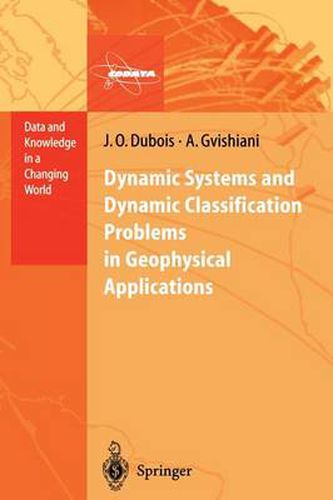Readings Newsletter
Become a Readings Member to make your shopping experience even easier.
Sign in or sign up for free!
You’re not far away from qualifying for FREE standard shipping within Australia
You’ve qualified for FREE standard shipping within Australia
The cart is loading…






This title is printed to order. This book may have been self-published. If so, we cannot guarantee the quality of the content. In the main most books will have gone through the editing process however some may not. We therefore suggest that you be aware of this before ordering this book. If in doubt check either the author or publisher’s details as we are unable to accept any returns unless they are faulty. Please contact us if you have any questions.
This book is the latest volume in the series entitled
Data and Knowledge in a Changing World , published by the Committee on Data for Science and Technology (CODATA) of the International Council of Scientific Unions (Icsu). This series was established to collect together, from many diverse fields, the wealth of information pertaining t.o the intelligent exploitation of data in the conduct of science and technology. This volume is the first in a two-volume series that will discuss techniques for the analysis of natural dynamic systems, and their applications to a variety of geophysical problems. The present volume lays out the theoretical foun dations for these techniques. The second volume will use these techniques in applications to fields such as seismology, geodynamics, geoelectricity, ge omagnetism, aeromagnetics, topography and bathymetry. The book consists of two parts, which describe two complementary ap proaches to the analysis of natural systems. The first, written by A. Gvishi ani, deals with dynamic pattern recognition. It lays out the mathematical VI Foreword theory and the formalized algorithms that. forms the basis for the classifi cation of vector objects and the use of this classification in the study of dynamical systems, with particular emphasis on the prediction of system behavior in space and time. It discusses the construction of classification schemes, and the evaluation of their stability and reliability.
$9.00 standard shipping within Australia
FREE standard shipping within Australia for orders over $100.00
Express & International shipping calculated at checkout
This title is printed to order. This book may have been self-published. If so, we cannot guarantee the quality of the content. In the main most books will have gone through the editing process however some may not. We therefore suggest that you be aware of this before ordering this book. If in doubt check either the author or publisher’s details as we are unable to accept any returns unless they are faulty. Please contact us if you have any questions.
This book is the latest volume in the series entitled
Data and Knowledge in a Changing World , published by the Committee on Data for Science and Technology (CODATA) of the International Council of Scientific Unions (Icsu). This series was established to collect together, from many diverse fields, the wealth of information pertaining t.o the intelligent exploitation of data in the conduct of science and technology. This volume is the first in a two-volume series that will discuss techniques for the analysis of natural dynamic systems, and their applications to a variety of geophysical problems. The present volume lays out the theoretical foun dations for these techniques. The second volume will use these techniques in applications to fields such as seismology, geodynamics, geoelectricity, ge omagnetism, aeromagnetics, topography and bathymetry. The book consists of two parts, which describe two complementary ap proaches to the analysis of natural systems. The first, written by A. Gvishi ani, deals with dynamic pattern recognition. It lays out the mathematical VI Foreword theory and the formalized algorithms that. forms the basis for the classifi cation of vector objects and the use of this classification in the study of dynamical systems, with particular emphasis on the prediction of system behavior in space and time. It discusses the construction of classification schemes, and the evaluation of their stability and reliability.